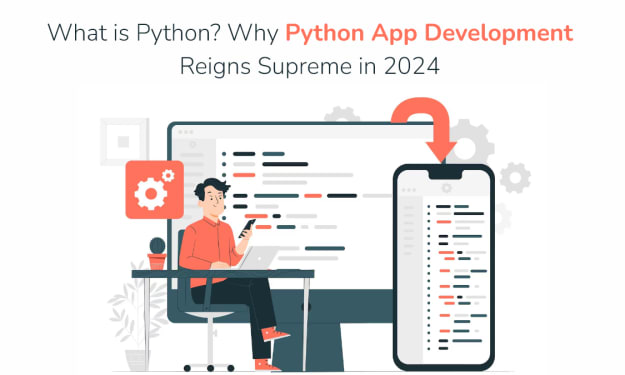How To Start Data Analyst Career
Data Analytics Career

Hey there! Are you ready to dive into the exciting world of data analytics? This field is all about using data to uncover insights, make better decisions, and solve problems. It's one of the fastest growing and in-demand fields today and it's no surprise why. With the amount of data being generated each day, data analytics is essential to almost every industry. Whether you're a student, a professional, or just someone with a curious mind, data analytics has something to offer. This guide will help you understand the basics of data analytics, the tools and techniques used in the field and also give you hands-on experience working on projects. So, get ready to take a deep dive into the world of data analytics and see where it can take you.
To start a data analytics track, you can follow these steps:
- Familiarize yourself with the basic concepts of data analytics, such as statistics, data visualization, and programming.
- Choose a programming language, such as Python or R, and learn the basics of programming and data manipulation.
- Learn about data visualization tools, such as matplotlib and seaborn for Python, and ggplot for R.
- Learn about data manipulation and cleaning tools, such as pandas for Python and dplyr for R.
- Learn about statistical analysis tools and techniques, such as hypothesis testing and regression analysis.
- Get hands-on experience by working on projects and analyzing real-world data sets.
- Stay up-to-date with the latest trends and tools in the field by reading industry publications and participating in online communities.
____________________________________________________
- Familiarize yourself with the basic concepts of data analytics:
- Tips: Start with understanding the different types of data and the ways in which they can be analyzed, such as descriptive, diagnostic, predictive, and prescriptive analytics.
- Resources: Books like "Data Analytics Made Accessible" by Anil Maheshwari and "Data Smart: Using Data Science to Transform Information into Insight" by John W. Foreman.
2. Choose a programming language, such as Python or R, and learn the basics of programming and data manipulation:
- Tips: Decide which language you prefer to work with, and start with the basics such as variables, loops, and functions.
- Resources: Codecademy for Python and DataCamp for R.
3. Learn about data visualization tools:
- Tips: Learn how to create different types of charts and graphs, such as line charts, bar charts, and scatter plots, and understand how to use them effectively to communicate insights.
- Resources: Data visualization courses on Coursera, such as "Data Visualization with Python" and "Data Visualization with ggplot2" on DataCamp.
4. Learn about data manipulation and cleaning tools:
- Tips: Learn how to clean and prepare data for analysis, such as handling missing values and outliers, and how to manipulate data to create new features.
- Resources: Data Wrangling courses on Coursera, such as "Data Wrangling with Python" and "Data Wrangling with dplyr" on DataCamp.
5. Learn about statistical analysis tools and techniques:
- Tips: Learn the basics of statistical analysis, such as probability distributions, hypothesis testing, and regression analysis.
- Resources: Statistical Analysis courses on Coursera, such as "Introduction to Statistical Learning" and "Applied Data Science with Python" on IBM.
6.Get hands-on experience by working on projects and analyzing real-world data sets:
- Tips: Participate in Kaggle competitions, work on personal projects, or find a dataset and try to answer specific questions using the tools and techniques you've learned.
- Resources: Kaggle, UCI Machine Learning Repository, Data.gov
7. Stay up-to-date with the latest trends and tools in the field by reading industry publications and participating in online communities:
- Tips: Follow industry leaders on social media, subscribe to data science newsletters, and participate in online forums and communities to stay informed about new tools and trends.
- Resources: KDnuggets, Data Science Central, Reddit Data Science Community.
____________________________________________________
There are many hands-on projects that you can work on to gain practical experience in data analytics, some examples include:
- Customer segmentation: Use customer data to segment your customer base into different groups based on demographics, purchase history, or other factors. Use visualization tools to create charts and graphs to help understand the segments.
- Predictive modeling: Build predictive models using machine learning techniques to predict future outcomes based on past data. Use techniques such as linear regression, decision trees, and random forests to create models.
- Recommender systems: Build a recommendation system to suggest products or services to customers based on their past behavior or preferences. Use techniques such as collaborative filtering and content-based filtering to create the recommendations.
- Dashboarding: Creating interactive dashboards to help users explore and interact with data, such as using Tableau, PowerBI, or Looker.
In conclusion, data analytics is a powerful tool that can be used to uncover insights, make better decisions, and solve problems. The field is growing rapidly and is essential to many industries. This guide has provided you with a basic understanding of the concepts of data analytics, the tools and techniques used in the field, and how to get hands-on experience by working on projects. Remember that data analytics is a vast field and you can specialize in areas such as Business analytics, Predictive analytics, Data mining, Big data analytics, etc. It's important to choose a specific field and narrow down your learning path accordingly. With the knowledge and skills acquired from this guide, you are well on your way to becoming a data analyst and making a meaningful impact in this field. Keep learning and experimenting, and don't be afraid to try new things. The possibilities are endless when it comes to data analytics.
If you find this piece interesting, please consider leaving a ❤️, or even a tip. Your support means a lot to me as a writer! You can also read more of my stories here
About the Creator
ansam yousry
Work as data engineer , experienced in data analyst and DWH , Write technical articles and share my life experience






Comments
There are no comments for this story
Be the first to respond and start the conversation.